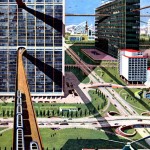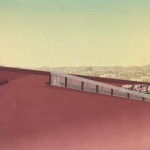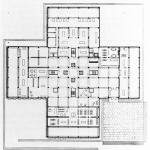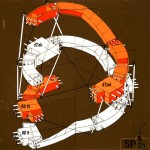Thesis project by Michael Hara.
michaelhara.com
The Architecture of Possibility
This project explores hypertextuality, fiction, and narrative, utilizing architecture as a language to investigate these philosophies and phenomena. The proposal is a home for three fictional characters: a Victorian watchmaker, a Renaissance engraver, and a post-modern librarian. The three characters convene to re-create Giulio Camillo’s memory theater, a mechanism designed to convey infinite knowledge and wisdom upon anyone who entered its construct. The project is written in both images and words; plans and poetry. It is a fiction and should be read as such.
Location: Nicollet Island, 2010
Winner of the Richard Morrill Outstanding Thesis Award




This project utilizes narrative and fiction as generators for an architectural proposition – one that is theoretical, philosophical, and physical; that is, it is an actual built proposition, not merely an idea. Within this framework the project specifically addresses issues of hypertextuality, memory, and identity in architecture. Hypertextuality is a post-modern belief in interconnectedness between literary works and, on a broader scale, the interconnectedness of all phenomena (be they physical or ethereal), whereby the universe exists not as a distinct and isolated set of phenomena but rather is a network of interconnections and associations. It also refers to the value of juxtaposition and aggregation – that new forms of knowledge might be born through their associations with dissimilar items.




Memory here refers to not only the psychological functions of storage and retrieval but the larger societal values of remembrance and history. In an age when the computers are increasingly making memory unnecessary or obsolete (indeed it is much easier now, than ever, to instantaneously retrieve information from the internet), this project explores how we can utilize architecture and its objects as a way to project our memory into the physical realm of our world.
Identity is that ambiguous and slippery term which has, perhaps, its own individual meaning to each individual, and thus proves difficult to nail down as a singular ideal. Within the framework of this project, identity is utilized as the schema through which architecture and its contents – including furniture, objects, and people – can come to reflect the identity and personality of a single person.
Full text here.














I found your project incredibly inspiring and rejoice in your embrace of the fictional narrative as an exploratory tool within an architectural context. I found the concepts you presented of hypertextuality, aggregation and memory intriguing and I wonder what would emerge if you extracted the same tools and placed them in a contemporary real life context in the design of an academic library as an example.